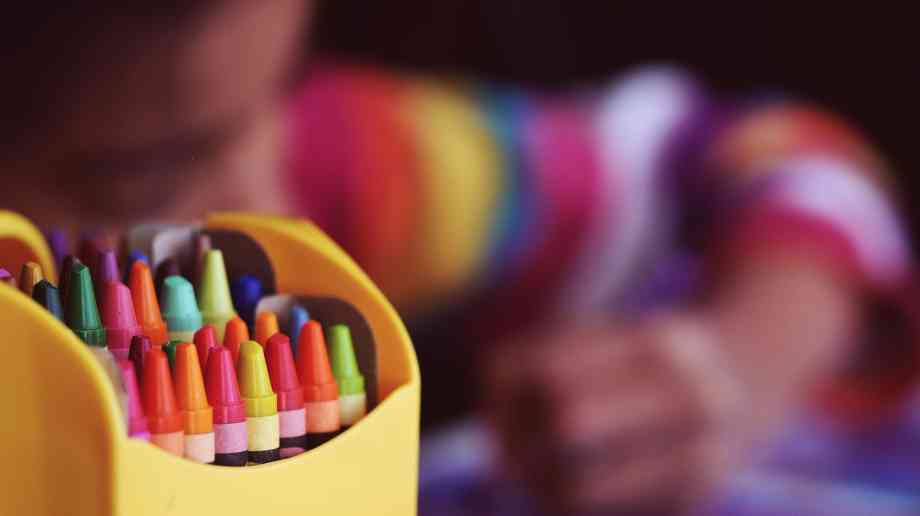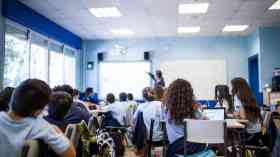
Social distancing in schools
It is likely that when schools re-open for the majority of children, social distancing measures will need to be adhered to to some extent, as is currently being done in the schools that remain open for key worker children and vulnerable groups. But what does social distancing in educational settings look like in practice?
On 20 March 2020, the school term came to an abrupt end, following the announcement that schools would close to the majority of children due to the escalating coronavirus pandemic. Schools would however, remain open for those who have 'key worker' parents, as well as 'vulnerable' children.
Social distancing - the requirement to keep a distance from others to limit the spread of the virus - is required in those schools that remain open, although it is acknowledged that this is difficult, especially for younger age groups.
There is much talk of schools re-opening in a phased manner to stop too many individuals sharing the school environment at one time. Social distancing to some extend will also need to be adhered to when schools reopen.
The Scottish government is carrying out work to study how "physical distancing" could be continued in schools, transport, businesses and recreation. It says: "Easing restrictions will not mean returning to how things were before the virus. Physical distancing, hand hygiene, and other critical behaviours will be essential in each sector."
We take a look at the Department for Education's advice on social distancing for the educational settings that remain open, in anticipation that some of the advice will remain in place when schools re-open to the masses.
Main considerations
The virus that causes COVID-19 is mainly transmitted through droplets generated when an infected person coughs, sneezes or speaks. These droplets are too heavy to hang in the air. They quickly fall on floors or surfaces. Much of the advice for schools, colleges and childcare settings is to follow steps on social distancing, handwashing and other hygiene measures, and cleaning of surfaces.
The first piece of advice is to ensure that those that display any symptoms of coronavirus (COVID-19) do not enter the school. This applies to children, parents, carers or any visitors, such as suppliers.
Consideration should be given as to how children arrive at the education or childcare setting, and any unnecessary travel on coaches, buses or public transport should be reduced.
For schools that remain open, class sizes must reflect the numbers of teaching staff available and are kept as small as possible. Lunch times, break times, and the movement of pupils around the school must be staggered, to reduce large groups of children gathering. Parents should also be discouraged from gathering at the school gates.
All staff and children must wash their hands with soap and water for 20 seconds frequently, and help those who have trouble doing so. Everyone is encouraged not to touch their faces and must be told to use a tissue or elbow to cough or sneeze and use bins for tissue waste.
There must be increased cleaning of surfaces in classrooms, including desks and handles, and within toilet blocks and changing rooms, adhering to guidance on cleaning of non-healthcare settings.
The Department for Education says it is putting in place a new process that allows schools to be reimbursed for costs that they face as a result of extra cleaning during this period.
Schools should inform parents and communities about the measures they are taking. Schools should also ask parents to talk to their children about coronavirus, social distancing and handwashing, as well as to follow guidance for households with possible coronavirus infection.
Social distancing in practice
So what does effective social distancing involve in practice in educational settings?
As much as possible, children, young people and staff should be spaced apart at all times. This means sitting children at desks that are far apart and ensuring everyone queues and eats further apart than normal. In the playground and when doing physical exercise, children should be kept apart. Visits to the toilet should be taken one at a time and break times should be staggered. Guidelines should be put out in corridors and unnecessary staff gatherings should be avoided.
Social distancing measures should also be in place when providing meals, or food for collection, from families of free school meal pupils not in school.
Clear messaging to pupils about the purpose of social distancing, and personal hygiene, is particularly important.
For schools that remain open with a small number of pupils attending, these measures are feasible. But when schools open for the masses, social distancing becomes more difficult. Indeed, almost three-quarters of school staff have said that social distancing in UK schools is “impossible” in a recent Tes survey.
Once schools re-open, social distancing could involve only a few year groups attending, or pupils taking it in turns between studying at school and at home. It could also see some children work one week and others the next, or some attending school in the morning and others in the afternoons. In addition, classrooms could be redesigned to ensure social distancing.
Young children
Social distancing for settings with very young children will be harder to maintain. Staff should implement the recommended measures as far as they are able, whilst ensuring children are kept safe and well cared for.
Staff should pay particular attention to handwashing before and after supporting children who need toileting or eating, as well as avoiding touching their own face whilst at work. Teachers and other staff may want to use age and developmentally appropriate ways to encourage children to follow social distancing, hand-washing and other guidance, including through games, songs and stories. They should encourage parents/carers to reinforce these messages at home, by asking them to remind their children.
As much as possible, schools should seek to prevent the sharing of food, drink, utensils, equipment and toys. Equipment, toys and surfaces should be cleaned and disinfected more frequently.
Personal protective equipment
The DfE says that scientific advice indicates that educational staff do not require personal protective equipment. This is needed by medical and care professionals providing specific close contact care, or procedures that create airborne risk, such as suctioning and physiotherapy, for anyone who has coronavirus (COVID-19), and is displaying symptoms.
The virus that causes COVID-19 is mainly transmitted through droplets generated when an infected person coughs, sneezes or speaks. These droplets are too heavy to hang in the air. They quickly fall on floors or surfaces. The advice for schools, colleges and childcare settings is to follow steps on social distancing, handwashing and other hygiene measures, and cleaning of surfaces.
Some children, and young people with special educational needs, may be unable to follow social distancing guidelines, or require personal care support. In these circumstances, staff need to increase their level of self-protection, such as minimising close contact (where appropriate), cleaning frequently touched surfaces, and carrying out more frequent handwashing.
All educational settings are advised to follow the Public Health England (PHE) guidance on cleaning for non-healthcare settings. Schools should clean and disinfect equipment, toys and surfaces more regularly. This includes keyboards, mouse, tables, chairs, door handles, light switches and bannisters. Bins for tissues should be emptied throughout the day.
Staff, children, young people and families should be reminded to wash their hands for 20 seconds more frequently than normal, including on arrival at the setting, before and after eating, and after sneezing or coughing.
Further Information:
Latest News
14/11/2025 - 11:04
England’s councils are warning of a "ticking time bomb" in the special educational needs and disabilities (SEND) system, with new data showing deficits that could bankrupt local authorities within three years.
13/11/2025 - 12:14
Event for school leaders, governors and education professionals relocates to the historic Old Billingsgate venue in London.
13/11/2025 - 09:49
The regulations have been set following a second consultation and detailed collaborative working with organisations and people across deaf and hearing communities.
13/11/2025 - 09:39
The Education Committee has published a letter to the Secretary of State for Education asking for more detail about the Department for Education’s work on developing its SEND reforms.
13/11/2025 - 09:26
New analysis by NFER has highlighted the uneven distribution of pupils with special educational needs and disabilities (SEND) across mainstream schools in England.







